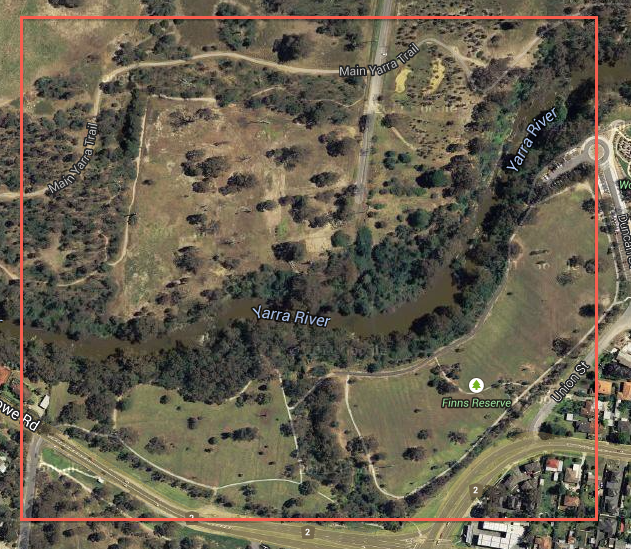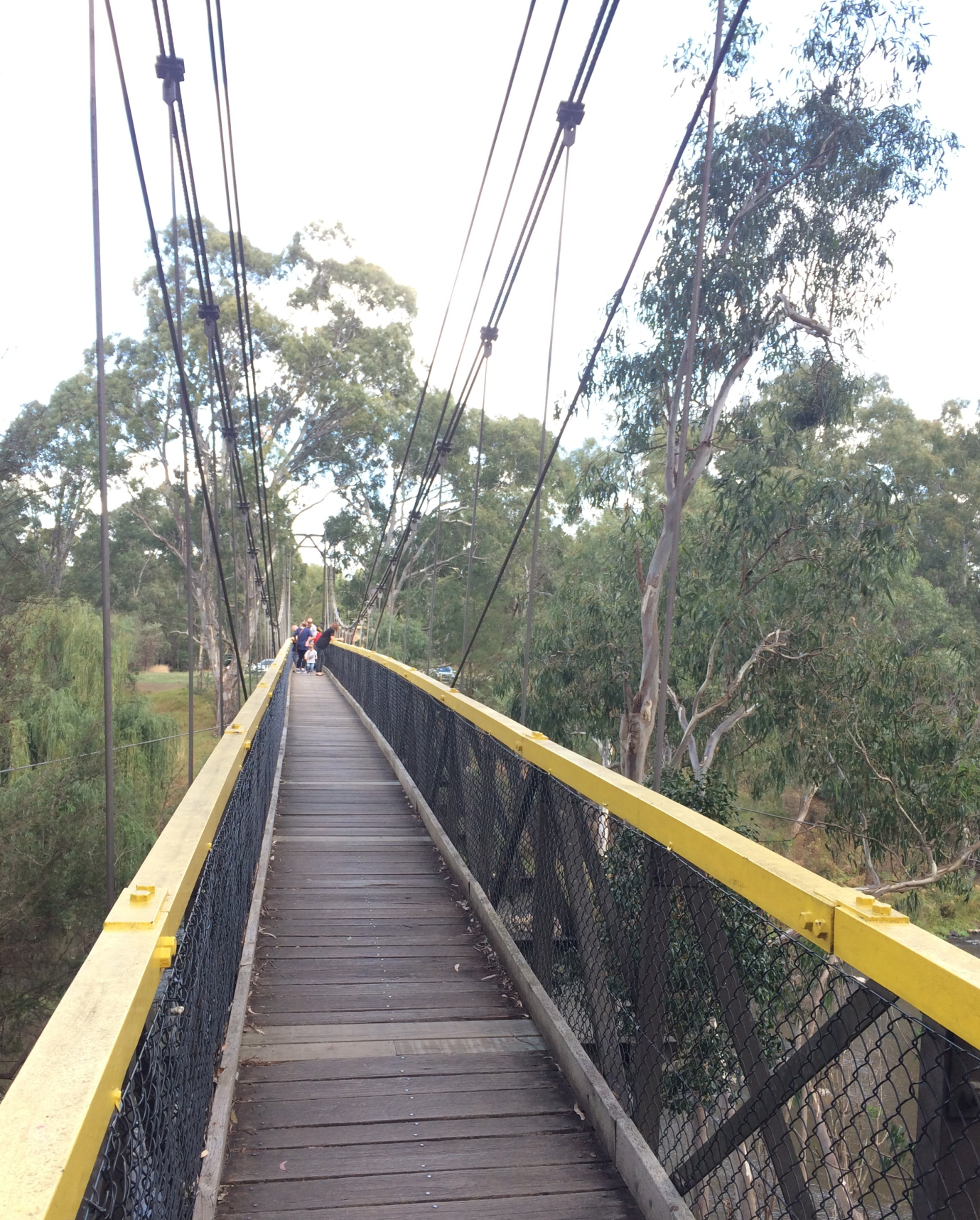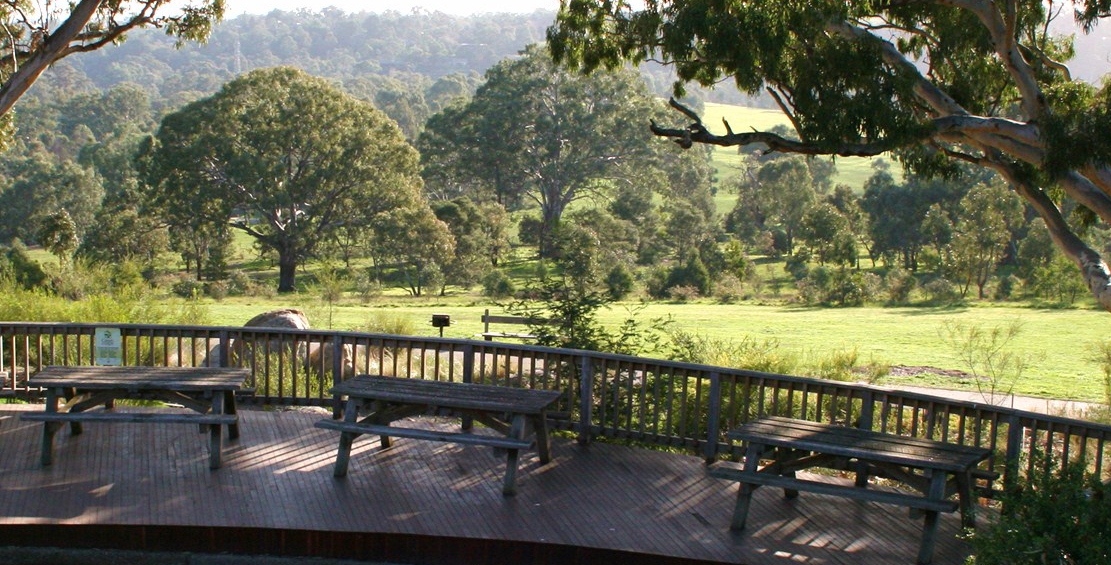Introduction
The objects of this study are the Yarra River Valley Park and Finns Reserve in Templestowe, Melbourne. The Yarra River Valley Park and the Finns Reserve are the recreational parks surrounded by the urban environment designed to offer a variety of socializing and playing opportunities for the individual, family, and corporate rest. The given landscape is of particular interest from the ecological point of view because it has a mixed structure of natural and anthropologic origin and performs a variety of functions including the functions of production, output, and cycling. The objective of the following report is to:
- analyse the given landscape in terms of its structure, function, and change;
- enlarge understanding of principles in landscape ecology.
Study Area
This report will consider the Finns Reserve and the Yarra River Valley Park located in Templestowe, Melbourne (see App. 1). According to Finns reserve (2014), the Finns Reserve and Yarra River Valley Park are parks with the forest plantations, network of gravel and bitumen paths, footbridges over the Yarra River, multiple shelters, playgrounds, fitness areas, dog training and exercise facilities, car parking facilities, and picnic tables (see App. 2-4).
Methods
The methods utilized for making observations within the frames of this study are watching the aerial large-scale images of the given landscape by means of using the Google maps service, field inspection on foot, and studying the images of the area available on the Internet and made during the field inspection on foot.
Discussion
The Structure of the Landscape
The area of focus in this study, the Finns Reserve and the Yarra River Valley Park, covers the territory of over 14 hectares (Finns reserve 2014) The northern boundary of the given area is the Main Yarra Trail, the eastern boundary is Duncan Street, the southern boundary is Templestowe Road, and the western boundary is designated by the residential area on the Greenslopes Drive (see App. 1).
The territory under examination is mostly flat with minor hills and the river Yarra valley. The range of elevations is less than 5 metres. The selected territory features relatively little topographic diversity. Generally, it is an open area without constructions or sectors with plantations of considerable size. The soils in this area are black soils of high reproductive capacity. The existing vegetation at the site of studies is opulent with numerous kinds of trees, shrubs, and herbaceous plants. The vegetation can be characterised as being in good condition not affected by the human activity. At the given site, sunny locations dominate over the shady locations since the zones planted by trees are much smaller than open areas with the grassy vegetation. The existing wildlife at the site of observation is quite scarce because of permanent anthropologic presence.
The mean annual rainfall is average. The balance between the dry season and the rainfall period make this territory very comfortable for the human activity. The rainy season mostly occurs during the period from January through March (Climate data online 2014). The climate is moderate with hot summers and mild winters. The river Yarra is the only watercourse located at the selected area.
The main components of the given landscape are sites with the planted trees, native plants such as weeds and vestures, playgrounds, toilets, shelters, areas for picnics, and hiking roads. The patches do not vary greatly at size, they are of varied kinds of shapes starting from traditional square areas and ending with oval playgrounds. The biggest part of the patches is of natural origin. The patches of human origin have regular forms such as square, but the natural ones are of irregular forms. Thus, the territory features average heterogeneity.
The landscape under consideration has multiple linear strips including the hiking roads, biking paths, and the river. While the river is of natural origin, the rest of the linear structures were created by people. The linear forms constructed by man are of smaller width than the one of natural origin.
The land mosaic in the Yarra River Valley Park is dominated by a few types of landscape elements including forested plantations, playgrounds, fitness areas, fences, walking roads, roads for biking, scout facilities, places for picnic, and car parking areas. With regards to a quantitative estimate of the area occupied by different components of the landscape, it should be stated that while the major part of the territory of approximately 55 percent is the open area occupied by the man-made facilities, there are areas planted by trees and other components of softscape occupying less than 45 percent of the area under consideration in this study.
The Landscape Function
The function of this landscape is mainly output as it is a recreational zone. People come to the Finns Reserve and the Yarra River Valley Park with their families and friends. They use the linear sites for hiking and going by bike and the areas covered by trees are used as locations for barbecues and picnics. Another function is production since the land is used by plants and animals for reproduction. A yet another function of the given landscape is cycling because it is used as a means of water and air masses cycling.
The Landscape Flows
The movement of water within the given territory is connected with the periodization of the rainy season and the groundwater processes. Water enters the area through the river and during the rainy season that lasts from January to March, it comes in the form of rainfall. Within the territory under study, the water flows in the Yarra River and its additional streams that emerge during rainfalls and disappear in other months. When the water leaves the given landscape, it continues flowing within the river Yarra. The movement of the water has not been influenced by changes to the structure of the landscape by human land use. Historical data suggests a conclusion that the local population settled beside the river Yarra (Pringle 2006). So, human factor did not affect the water flow in this territory. In the event of an exceptional downpour of rain in the Yarra River Valley Park, submergence of the areas close to the river Yarra will occur. The probability of flooding in such case is very high. The deluge will take place in the park and the surrounding territory.
The Landscape Changes
Over the last twenty years, the park territory has undergone some minor changes in the infrastructure. The management of the park aimed to facilitate better conditions for people’s rest. Thus, the heterogeneous character of this area was slightly diluted by means of car parking facilities construction, organization of fitness areas, walkways asphalting, and framing the grounds for picnics and family games.
Within the period of fifty years, the given area did not feature an infrastructure for recreational activates; however, its function was a similar one – the local population utilized it for the holding trade fairs, family rest and sports activities. Those days, the territory had a more natural appearance without an abundance of asphalted walking paths, car parking facilities, and sites for picnics (Pringle 2006).
One hundred years ago the territory currently occupied by the Finns Resort was a combination of an open non-living area used by the local people for the household needs and the living area occupied by the famous James Finn’s hotel (Mattar 2008). According to Finns reserve (2014), “the grand two storey hotel was licensed until 1922”.
The key factors that appear to influence the changes within the area under examination are the economic and anthropogenic factors (Mattar 2008). The Manningham community uses the open area near the Yarra River as a reserve where people are able to find space for recreational and socialization activity. The reserve is also used as a source of financing the community budget (Finns reserve 2014).
Addressing possible future changes within the given territory, the structure of the park will experience changes in order to correspond to the requirements of time. Particularly, a new infrastructure will be needed since people will engage in new recreational activities such as hobbies or sports. However, the functional changes of this resort are not likely to occur. This conclusion can be explained by the fact that the area is densely populated and the local inhabitants will still need facilities for the family and personal rest.
References
Climate data online 2014, Web.
Finns reserve 2014, Web.
Mattar, Y 2008, ‘Post-industrialism and Silicon Valley as models of industrial governance in Australian public policy’, Telematics and Informatics, vol. 25 no. 4, pp. 246-261.
Pringle, J 2006, Beyond Melbourne, Edmonton, Alta.
Appendix 1

Appendix 2

Appendix 3

Appendix 4
